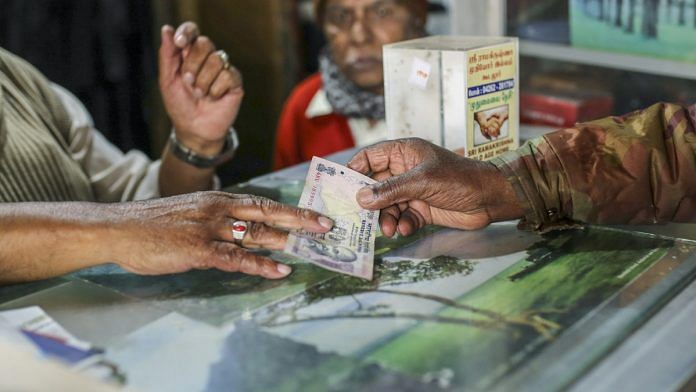A survey conducted by LocalCircles on demonetisation shows 25% of the respondents felt the move was fruitless.
New Delhi: Black money may be back in circulation two years after Prime Minister Narendra Modi’s shock demonetisation drive rendered 86 per cent of India’s currency illegal overnight to stamp out unaccounted-for wealth.
According to a study by LocalCircles, a social network for community-based issues, 39 per cent of 15,000 respondents across 215 districts said they made 50 to 100 per cent of their monthly purchases without any receipts.
Even after the implementation of the goods and services tax (GST), which was expected to streamline tax collections and make evasion harder, many consumers said they were able to make purchases without any receipts.
“Many consumers, who have been out for… festive shopping, have reported that the shopkeepers do not give them a receipt when they pay for the product in cash,” the study said. “However, if they pay with card or electronically, the receipt is given.”
As many as 37 per cent of the respondents said they bought 5 to 25 per cent of their monthly needs without any receipts, while 18 per cent said 25-50 per cent of their monthly purchases were made thus. The rest checked the “unsure” option.
Not just that, many said they even managed to buy property with cash payments. As many as 50 per cent of the respondents said they paid 25 to 50 per cent of the total amount in cash.
Not giving receipts helps businessmen understate their income for the purpose of tax evasion, which then stokes the amount of black money in the economy.
Another interesting finding of the study was that a quarter of the respondents felt that demonetisation was fruitless and yielded no benefits.
The majority, 60 per cent, said the circulation of black money will increase over the next few months as the Lok Sabha elections inch closer.
While 40 per cent said demonetisation had widened the tax base, only 12 per cent said it managed to reduce black money.
As many as 40 per cent of the respondents were from metros or tier-1 cities, while 31 per cent were from tier-2 cities and the rest from tier-3 cities and rural areas.
Also read: Why demonetisation was both Whatsapp-style jaadu economics and Kautilyan politics
Govt defends move
While announcing demonetisation — in a surprise address telecast live from 8 pm on 8 November 2016 — Prime Minister Narendra Modi had said the government’s main aim was to stamp out black money and counterfeit bank notes. With this, effective from midnight, the Rs 500 and Rs 1,000 notes in circulation immediately became illegal, spanning days of chaos where commoners stood outside ATMs for hours to get cash.
The unprecedented exercise, Modi said, was also aimed at boosting electronic payments and reducing the use of physical cash, another move meant to increase transparency. However, the exercise not only slowed the economic growth, but put millions of citizens under severe duress. Banks branches and ATMs often ran out of cash, leading to panic among citizens.
Meanwhile, a recent RBI report noted that 99.3 per cent of the notes in circulation on 8 November 2016 had been deposited in banks, leading to criticism that demonetisation had failed to achieve its main objective.
The government, however, has continued to defend the decision, with the finance ministry saying in a statement Thursday that “demonitisation [sic] formed a key step in a chain of important decisions taken by the Centre to formalise the economy and target black money holders within and outside the country”.
“It has also expanded [the] tax base while deepening financial inclusion,” the statement added.
Also read: Liberals hated the colours of Modi’s new notes but never understood their politics
The ministry also hit back at critics, saying that criticism on the return of the cash was “ill-informed”.
“Confiscation of currency was not an objective of demonitisation,” it said. “Getting it into the formal economy and making the holders pay tax was the broader objective. The system required to be shaken in order to make India move from cash to digital transactions. This would obviously have an impact on higher tax revenue and a higher tax base.”




Wish i could kill shopkeepers who don’t give me receipt
Miss/Mr “Anonymous”, this only shows that you haven’t really asked ANY shopkeeper for a receipt. THEY WILL ALL gladly give you a receipt which will have applicable taxes added to the merchandise value. It is actually the buyer who wants to complete the transaction without a receipt so she/he can skip taxes.
One would love to meet the 75% people who believe the move was “ fruitful “ …